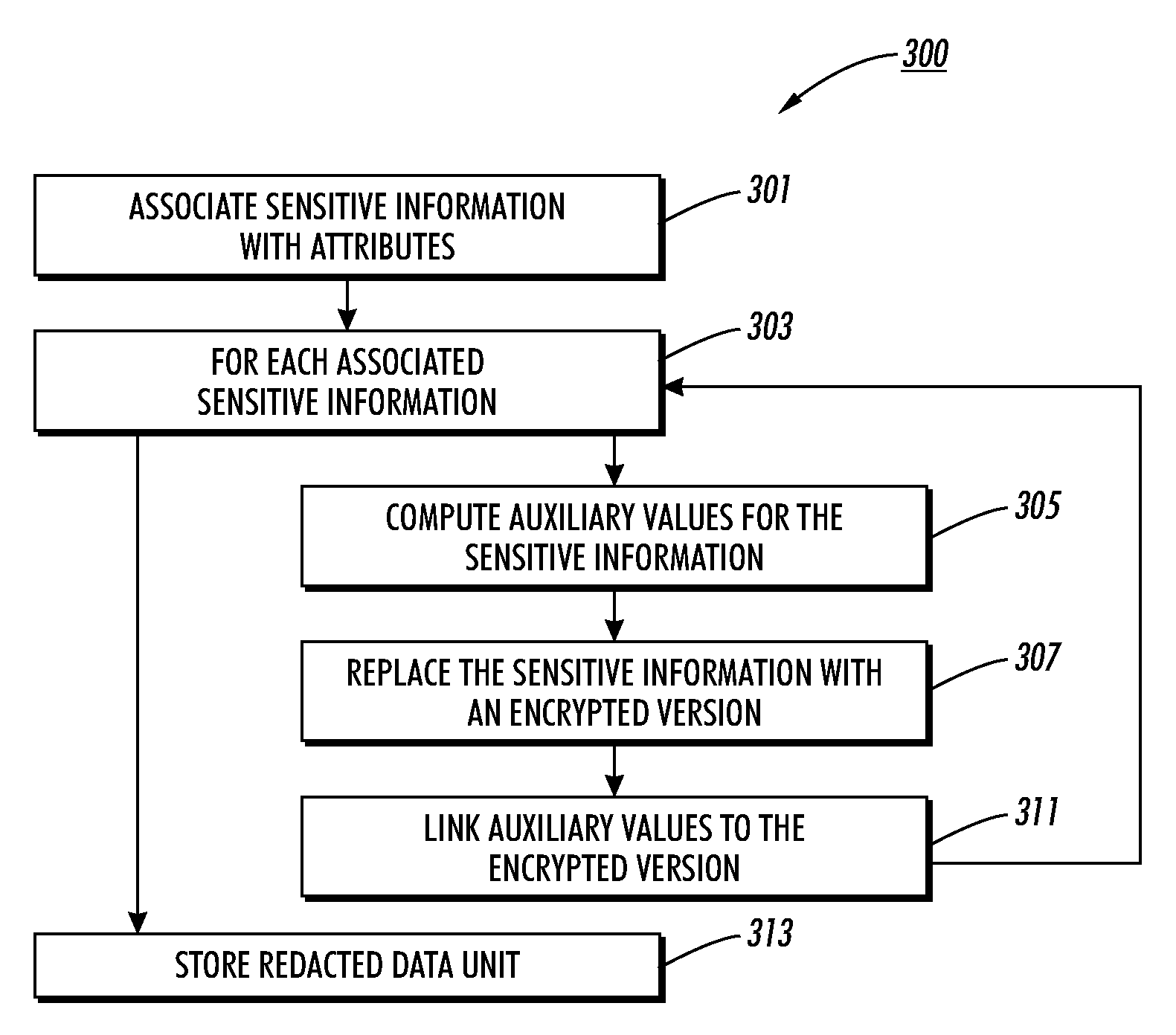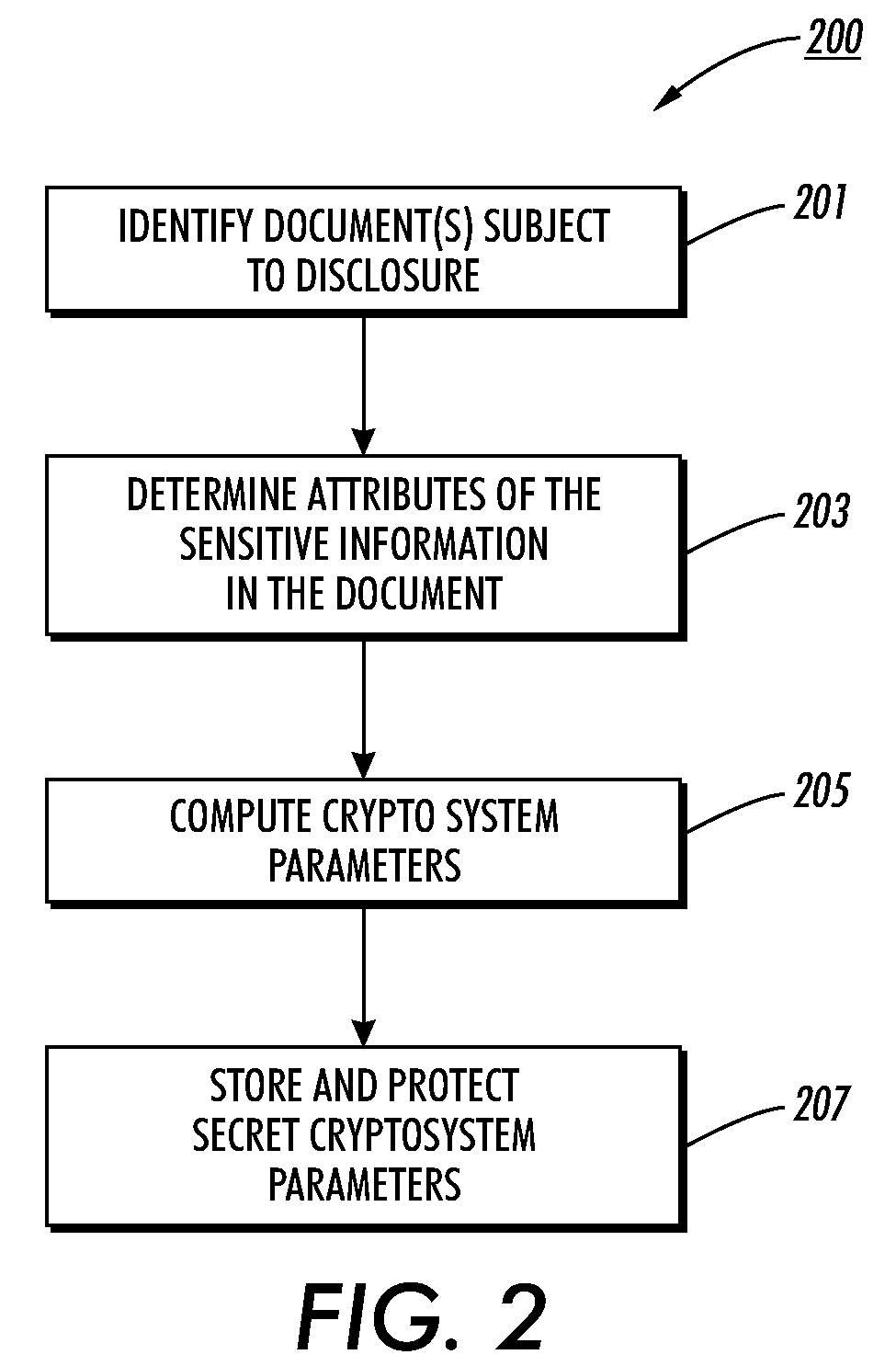Method, apparatus, and program product for flexible redaction of content
a content and content technology, applied in the field of cryptography and document processing, can solve the problems of misdelivering a partially redacted document to the wrong party, existing technology does not allow “in-document” redaction, etc., to facilitate content indexing and duplicate identification, facilitate content search, and reduce the time required to produce documents
- Summary
- Abstract
- Description
- Claims
- Application Information
AI Technical Summary
Benefits of technology
Problems solved by technology
Method used
Image
Examples
Embodiment Construction
[0015]This technology addresses a problem that is keenly felt in litigation. Lawsuits often involve multiple discovery requests, each of which requires a time-consuming review of every potentially relevant document to determine which portions disclose sensitive information to be redacted from the document prior to the disclosure of the document. Often the access rights to the sensitive information depend on who is to receive the document. Thus, different sets of sensitive information are redacted depending on the intended recipient of the redacted document. The technology disclosed herein uses encryption to enable reversible redaction. Encryption is used to provide “in-document” redaction of the sensitive content such that each “redacted” document contains all the information of the original document, but with portions of the redacted document's content stored in encrypted form.
[0016]Sensitive information can be identified by attribute tags that associate ranges in the document as h...
PUM
 Login to View More
Login to View More Abstract
Description
Claims
Application Information
 Login to View More
Login to View More - R&D
- Intellectual Property
- Life Sciences
- Materials
- Tech Scout
- Unparalleled Data Quality
- Higher Quality Content
- 60% Fewer Hallucinations
Browse by: Latest US Patents, China's latest patents, Technical Efficacy Thesaurus, Application Domain, Technology Topic, Popular Technical Reports.
© 2025 PatSnap. All rights reserved.Legal|Privacy policy|Modern Slavery Act Transparency Statement|Sitemap|About US| Contact US: help@patsnap.com



